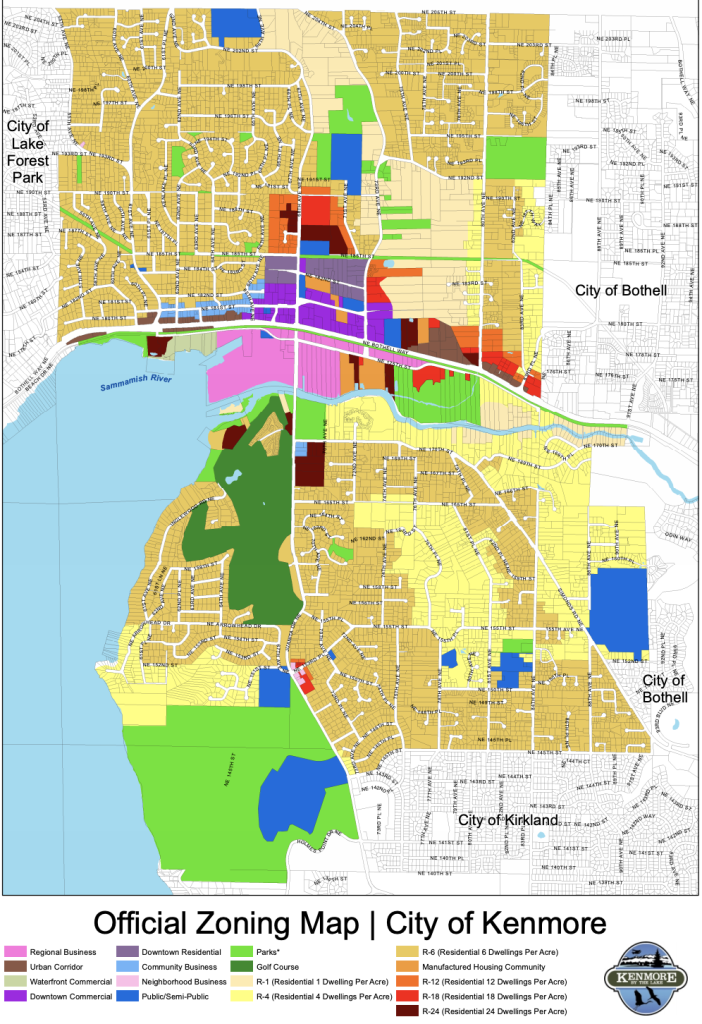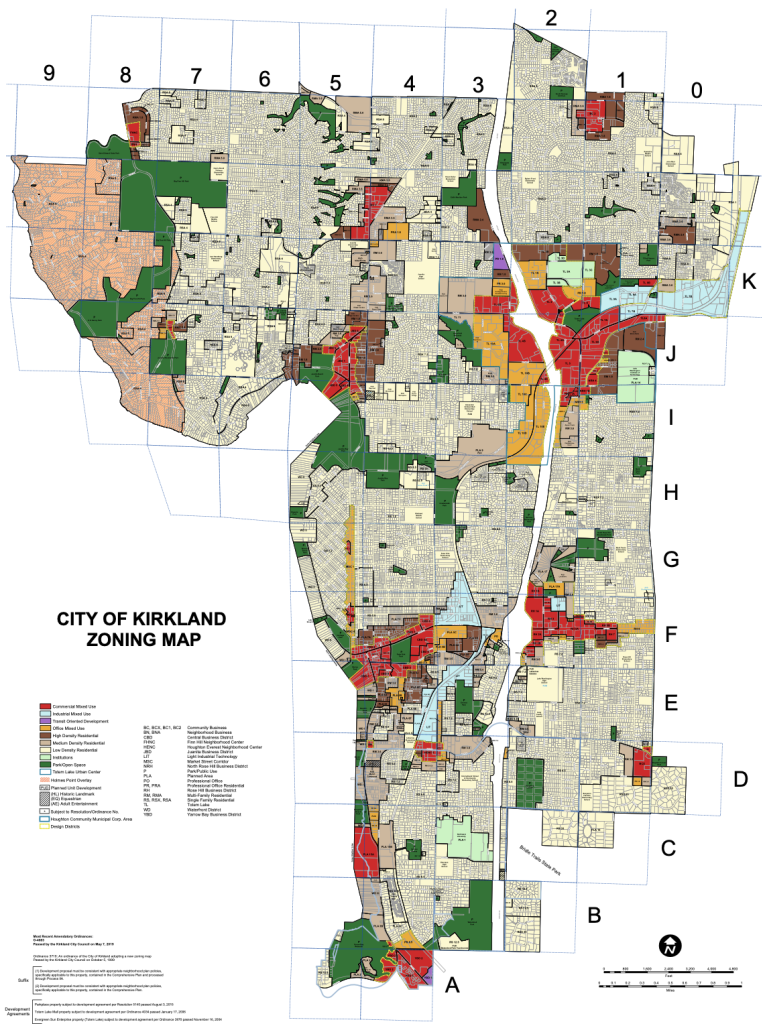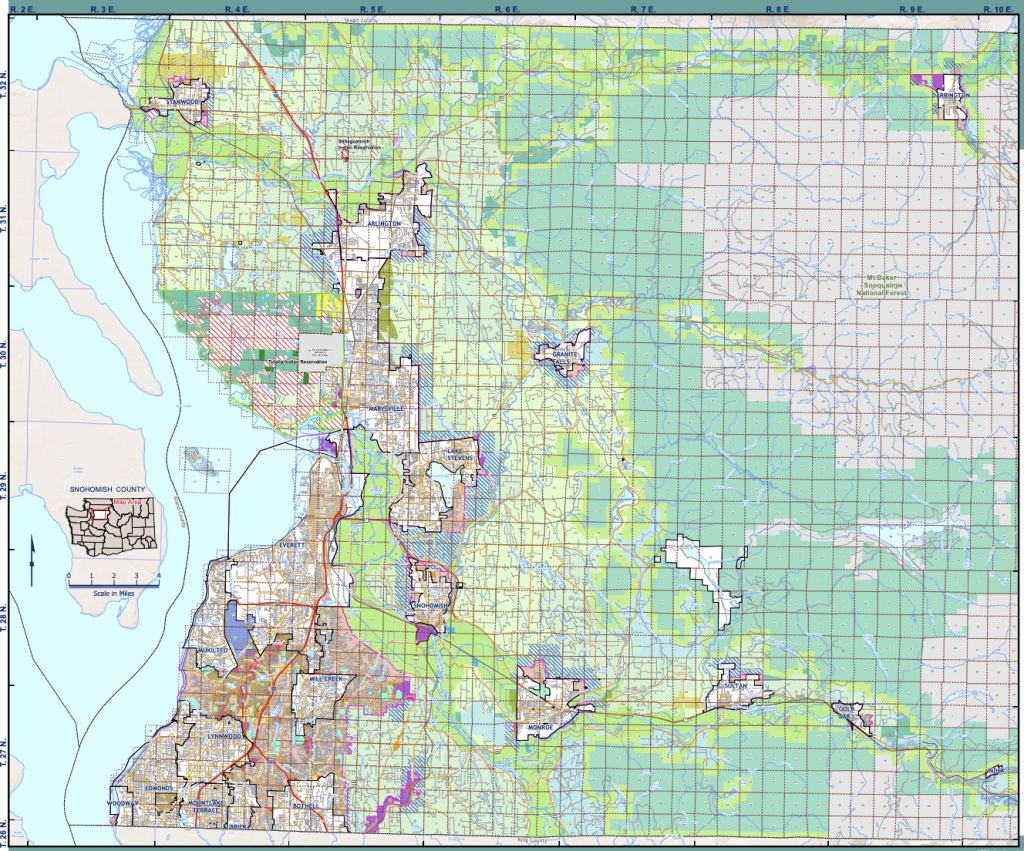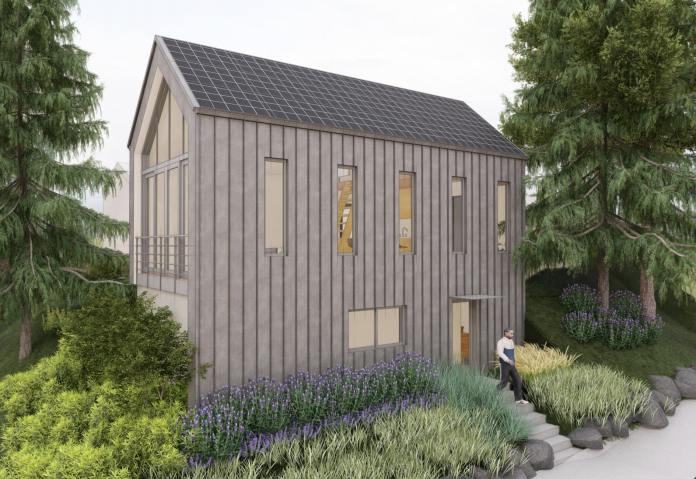Accessory dwelling unit (ADU) reform has been taking off across the Puget Sound region. Seattle, Tacoma, and Burien all approved sweeping changes to ADUs last year followed by Kirkland in March. Seattle also took a step further this week in launching a one-stop shop for property owners who are considering development of ADUs, making it easier to find off-the-shelf designs and determine if lots qualify. On Monday, Kenmore became just the last local jurisdiction to joined the ranks of regional ADU reform. Snohomish County now could be next.
Many local jurisdiction have focused on allowing more ADUs–whether attached (AADU) or detached (DADU)–on lots, reducing parking regulations, allowing larger unit sizes, and reducing or eliminating owner-occupancy requirements. So what have the latest batch of jurisdictions contemplated for their communities?
Here’s how Kenmore, Kirkland, and Snohomish County stack up at a very high level:
| Regulation | Kenmore (Adopted) | Kirkland (Adopted) | Snohomish County (Proposed) |
| Units | One per single-family residence with some exceptions | Two per single-family residence on a lot with some exceptions | One AADU and one DADU per lot with a single-family residence in urban zones and one ADU per lot with a single-family residence in non-urban zones with some exceptions |
| Size | 600 square feet to 1,500 square feet, depending upon lot size | 1,200 square feet with some exceptions | 1,600 square feet with some exceptions |
| Height | 35 feet with some caveats | Defaults to zoning standards | Defaults to zoning standards |
| Setbacks | Defaults to zoning standards generally, but in the R-4 and R-6 zones, an ADU may be allowed in the required rear setback provided that it is not located closer than 10 feet to the rear lot line | Defaults to zoning standards generally, but in low density residential zones, DADUs are allowed within 5 feet rear property line or alley | Defaults to zoning standards |
| Parking | Not applicable | On lots with more than one ADU, one off-street parking space is required with some exceptions | One off-street parking space is required per ADU with some exceptions in urban zones |
| Owner Occupancy | Only for six consecutive months after completion of the ADU | Not applicable | Not applicable |
Kenmore’s Reformed ADU Regulations

Kenmore, the latest city in the region to adopt ADU reform, made fairly modest changes that should make it easier to build ADUs in the city. The legislation is especially beneficial to DADUs, allowing them to be constructed on all single-family lots regardless of size for the first time.
However, the Kenmore City Council did weaken reform, dispensing with a planning commission-recommended policy to allow up to two ADUs on single-family lots that are 8,000 square feet or more in size. This change seems to have come about due to personal outlooks by some councilmembers on allowing more infill on single-family lots and spotty community opposition. This is despite the hope many councilmembers espoused that the legislation could bring about more affordable housing options in the community.
The key changes in the city’s ADU regulations are as follows:
| Kenmore | Previous | Adopted |
| Number of ADUs | One per single-family residence | One per single-family residence |
| DADUs | Only on lots sized 10,000 square feet or more | All single-family lots |
| AADU Maximum Size | 1,000 square feet or 50% of primary residence living space, whichever is greater | 1,000 square feet, except if on a single level of pre-existing floor area of the primary residence |
| DADU Maximum Siz | 10% of the lot size or 50% of the primary residence living space, whichever is less | On lots 6,000 square feet or greater in size, 10% of the lot area up to 1,500 square feet, and on lots less than 6,000 square feet in size, 600 square feet |
| DADU Maximum Height | 35 feet | 35 feet, provided that a DADU may not exceed one story over a detached garage or two stories if built from ground level |
| Setback Exceptions | Not applicable | In the R-4 and R-6 zones, an ADU may be allowed in the required rear setback provided that it is not located closer than 10 feet to the rear lot line |
| DADU Minimum Separation | Not applicable | 5 feet eave to eave or other projections beyond the walls between the DADU and primary residence |
| ADU Parking | One off-street parking space required | No longer applicable |
| AADU Entrance | Only one entrance for the primary residence or AADU may be located on each streetside facade | No longer applicable |
| Owner Occupancy | Either the primary residence or ADU must be owner-occupied | Either the primary residence or ADU must be owner-occupied for at least six consecutive months after completion of the ADU, after which point the requirement may be extinguished |
| Conversion | If the primary residence or ADU is no longer owner-occupied, the ADU must be removed or converted to another accessory use | No longer applicable |
| Household Size | The total number of occupants in the primary residence and ADU combined cannot exceed the maximum for a single-family dwelling | The total number of occupants in the primary residence and ADU combined cannot exceed the maximum for a single-family dwelling |
Kirkland’s Reformed ADU Regulations

Back in March before the pandemic full brought the region to a standstill, Kirkland snuck through a sweeping ADU reform ordinance. Many aspects of the city’s ADU reform have strong similarities to Seattle’s in 2019. The city authorized up to two ADUs per single-family residence on a lot. Parking requirements were also waived for the first ADU on a lot and ownership restrictions were loosened.
The key changes in the city’s ADU regulations are as follows:
| Kirkland | Previous | Adopted |
| Number of ADUs | One per single-family residence on a lot | Two per single-family residence on a lot, though DADUs may be limited to one per lot in certain cases |
| Location | Not applicable | DADUs on lots created from historic preservation subdivisions must be located behind the historic residence |
| AADU Maximum Size | 40% of the total square footage between the primary residence and AADU, provided that if the AADU is located on a single floor, the planning department may allow a larger size | 1,200 square feet, provided that if the AADU is located on a single floor, the planning department may allow a larger size |
| DADU Maximum Size | 800 square feet or 40% of the total square footage between the primary residence and DADU | 1,200 square feet |
| Setback Exceptions | Not applicable | In low density residential zones, a DADUs 1) without alley access may be located within 5 feet of a rear property line if the structure is no taller than 15 feet within the required rear yard, and 2) abutting an alley may be located within 5 feet of the alley |
| Entrances | A primary entrance to an ADU must be located in manner that is clearly secondary to the main entrance of the primary residence | A primary entrance to an ADU must be located in manner that is clearly secondary to the main entrance of the primary residence |
| ADU Parking | One off-street parking space is required | On lots with more than one ADU, one off-street parking space is required unless on-street parking is available within 600 feet of the lot or the lot is located with a half-mile of frequent transit service during commuter hours |
| Subdivision | An ADU cannot be subdivided or segregated in ownership from the primary residence | ADUs cannot be subdivided but can be segregated in ownership from the primary residence |
| Owner Occupancy | Either the primary residence or ADU must be owner-occupied | No longer applicable |
| Prohibited Lots | ADUs are prohibited are on lots smaller than the minimum lot size for small lot single-family and historic preservation subdivisions | No longer applicable |
| Household Size | The total number of occupants in the primary residence and ADU combined cannot exceed the maximum for a single-family dwelling | Only as limited under the Property Maintenance Code |
| Floor Area Ratio Exemptions | First 500 square feet of ADUs on a lot less than 8,500 square feet in size when located more than 20 feet from and behind the primary residence, and first 800 square feet of ADUs on a lot less equal to or greater than 8,500 square feet in size when located more than 20 feet from and behind the primary residence | Same, except that the exemption also applies to DADUs 10 feet from and behind the primary residence |
ADUs otherwise must conform to ordinary setback, height limit, and lot coverage standards of the corresponding zone. So for many DADUs, it will be possible to construct 25-foot to 30-foot tall buildings in low density residential zones. Additionally, Kirkland was able to get buy-off from the all-important Houghton Community Council for the legislation. The community council uniquely holds powers to legislation separate and apart from the city council, but agreement means that the new ADU laws will be equally applied in the well-to-do neighborhood.
Snohomish County’s ADU Proposal

Snohomish County is poised to become another local jurisdiction to adopt ADU reform. Earlier this summer, the county’s planning commission was briefed on a proposal and recommended that it be approved in July with only changes to the ADU size. County staff had recommended that urban and non-urban zones be treated differently limiting ADUs to 1,000 square feet in urban zones whereas in rural, resources, and other zones, the limitation would be slightly higher at 1,200 square feet. Ultimately, this was simplified to 1,600 square feet regardless of zoning context. Whether or not the county council will agree on that matter remains to be seen, but it might be something to reconsider, especially since there is nothing to prevent someone from having a 1,600 square foot “ADU” with a five-car garage, a not-so-uncommon feature in rural areas of the county. On the flip side, the proposal does not address lot coverage, which is fairly low in urban residential zones and could pose a challenge to many lots that might otherwise be able to accommodate an ADU.
The key proposed changes in the county’s ADU regulations are as follows:
| Snohomish County | Current | Proposed |
| Number of ADUs | One per lot with a single-family residence, provided that an ADU is not permitted on a lot that has a temporary dwelling unit | In urban zones, one AADU and one DADU are permitted per lot with a single-family residence; and in rural, resource, or other zones, one ADU is permitted per lot with a single-family residence, provided that DADUs are not permitted on lots that do not meet the minimum lot size for the zone and DADUs as mobile homes are only permitted on lots that are 10 acres in size or more |
| AADU Maximum Size | 20% to 40% of the floor area of the primary residence, depending up size, up to 1,500 square, provided that an AADU cannot be less than 360 square feet and the primary residence cannot be reduced to less than 900 square feet | 1,600 square feet, excluding garages, porches, and unfinished basements |
| DADU Maximum Size | 40% of the floor area of the primary residence or 850 square feet, whichever is less, provided that a DADU cannot be less than 360 square feet | 1,600 square feet, excluding garages, porches, and unfinished basements |
| DADU Location | In residential, multiple family, and commercial zones, a DADU cannot be located beyond the primary residence front unless well landscaped or compatible | No longer applicable |
| ADU Parking | One off-street parking space is required | One off-street parking space is required per ADU, except that in urban zones one of the two parking spaces for primary residence can be used to meet the requirement |
| Owner Occupancy | An owner-occupancy covenant must be recorded | No longer applicable |
| Non-Urban Standards | Not applicable | Maximum separation between the primary residence and DADU is 100 feet, except for DADUs in a legally constructed accessory structure prior to the ADU reform legislation adoption, and ADUs must use the same driveway as the primary residence |
| Screening | ADUs must be screened with a six-foot high fence or five-foot wide high intensity landscape screening | No longer applicable |
| Substandard Lots | ADUs are prohibited | No longer applicable |
| Use Authorization | In zones where permitted, an administrative conditional use permit is required | In zones where permitted, the use is permitted outright |
The Snohomish County Council is the next stop for the legislation, which so far has not had an initial briefing. With the budget season ahead, final adoption of the legislation is probably still a ways off, making sometime in December the best case scenario. If adopted, the regulations will affect a fairly large geographic area consisting of unincorporated urban and rural areas of the county, perhaps having a similar degree of impact in ADU production as Seattle.
With so many local jurisdictions jumping on the ADU bandwagon, it is only a matter of time that more will. But which ones will be next and how will they approach regulatory policies?
Stephen is a professional urban planner in Puget Sound with a passion for sustainable, livable, and diverse cities. He is especially interested in how policies, regulations, and programs can promote positive outcomes for communities. With stints in great cities like Bellingham and Cork, Stephen currently lives in Seattle. He primarily covers land use and transportation issues and has been with The Urbanist since 2014.


